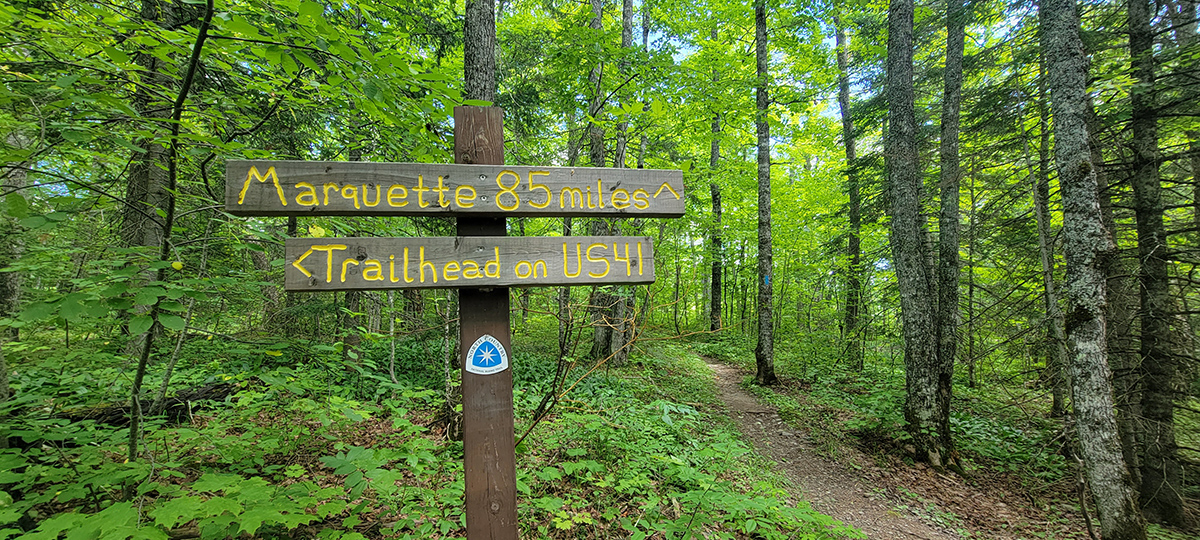WRITER | RACHEL WHITE
In the last couple of years, the National Park system has been having a renaissance, with more people than ever getting outside to see the natural wonders. The 423 national park sites across the country are divided into designations like national historic sites, national monuments, national recreation areas, and more, with 63 identified as national parks. Michigan is home to one of the 63: Isle Royale National Park. We also lay claim to two of the three national lakeshores: Sleeping Bear and Pictured Rocks. River Raisin is a national battlefield park commemorating the War of 1812, and our last park is Keweenaw National Historical Park, preserving the cultural copper mining history.
Isle Royale National Park
Rugged and remote in the Upper Peninsula, Isle Royale is a hidden gem in the National Park System. A 210-square-mile island in northwest Lake Superior, this is the only national park that’s an island. It’s accessible only by boat (six hours from Houghton, three hours from Copper Harbor) or floatplane and is one of the least visited and serene of the national parks. There are no cars or roads on the island, so be prepared with your hiking boots. With 165 miles of hiking trails, you’re sure to find a favorite.
At last count, there were around 1,600 moose on the island, so it’s a good bet that you’ll catch sight of one of these gentle giants along with wolves, fox, beavers, otters, and snakes. The island is also a bird-watching paradise. There are 36 campgrounds (permit required), so bring along a tent, food, water filters, etc. One lodge with two restaurants is open seasonally for the camping averse. Off land, you can paddle out in the crystal-clear waters to see shipwrecks, lighthouses, and marine wildlife.
Pictured Rocks National Lakeshore
There is a lot to love about the four-season Pictured Rocks National Lakeshore, located between Grand Marais and Munising in the Upper Peninsula. In addition to the multi-hued mineral-striped sandstone cliffs for which the park is named, spectacular summer waterfalls create perfect ice-climbing venues in the winter. There are beaches, dunes, rocks, and caves to explore as well. Nature puts on a spectacular show along the 100 miles of trails with breathtaking rock and cave formations. Backpacking through the park’s 70,000 acres is allowed with a permit, though kayaking along the shores of Lake Superior is arguably the best way to see the incandescent radiance of the pictured rocks. With an average of 140 inches of snow, winter brings opportunities for snowshoeing, cross-country skiing, snowmobiling, and, of course, ice-climbing.
River Raisin National Battlefield Park
River Raisin National Battlefield Park commemorating the War of 1812 is located about 30 miles south of Detroit. Most people are very surprised to learn that this four-year conflict between the young United States and Britain raged so far inland from the East Coast and the famous sacking of Dolley Madison’s White House. With a visitor center and paved interpretive walking trails between a somber battlefield and historic sites and buildings, there is a lot to reflect on.
Keweenaw National Historical Park
Michigan’s third national park in the UP, Keweenaw, celebrates a rich cultural history. The Keweenaw Peninsula has the most extensive deposits of copper in the world, and it’s been mined for the last 7,000 years. The copper here is relatively pure and has been made into everything from ancient jewelry and tools to present-day coins and electrical wire. In a roundabout way, we have copper to thank for our famous UP pasty. In the 1830s, news of the copper mines was published internationally, and many families from Cornwall on England’s western coast immigrated to Keweenaw, bringing Cornish pasties with them. In the 1960s, the mines closed, and in 1992, the national park opened, preserving the heritage of the copper miners.
Sleeping Bear Dunes National Lakeshore
Stretching 35 miles down the coast of Lake Michigan, Sleeping Bear Dunes has been named the most beautiful place in America. It’s also Michigan’s most popular national park. Of the 2.5 million visitors to Michigan’s national parks every year, 1.5 million come to Sleeping Bear. The 70,000-acre park includes 14 stunning beaches, two islands, the largest moving sand dune in the world, inland lakes, and abundant forests. There is the dune climb, camping, boating, hiking, skiing in the winter, and fun year-round.
Now you have five more places to add to your Michigan bucket list. The National Park Foundation has a program called Every Kid Outdoors and is worth looking into if children are included in your travel plans. This program lets all 4th graders and their families into every national park free of charge. There is also a junior ranger program that gets kids involved and interested in the parks. Go to EveryKidOutdoors.gov to claim your pass.








